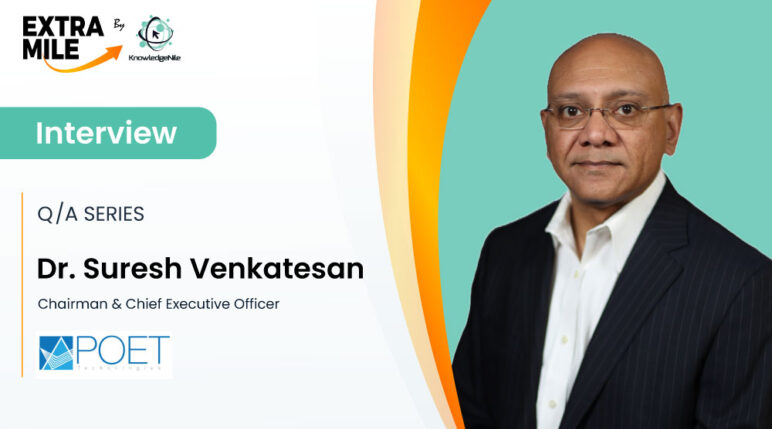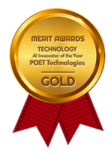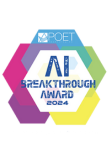Explore insightful interviews with ExtraMile by KnowledgeNile, where experts delve into innovative technologies, strategic marketing approaches, and their professional journey.
In this episode, we are excited to host Dr. Suresh Venkatesan, the Chairman and Chief Executive Officer of POET Technologies, a frontrunner in designing and developing high-speed photonics products engineered specifically for the artificial intelligence systems market and hyper-scale data centers.
With over 25 years of experience in semiconductor technology development, Dr. Venkatesan leads POET Technology through the pioneering revolutionary integration of electronic and photonic devices with the extraordinary POET Optical Interposer.
Accompany us as we trace along the journey of great success under his leadership, alongside offering a glimpse into his vision about the future of AI and photonics.
Welcome Dr. Venkatesan! We are overwhelmed to have you today with us.
Can you tell us about your journey from being a director at Freescale Semiconductors to becoming the CEO of POET Technologies?
Ans. I joined POET from Global Foundries, where I served most recently as Senior Vice President, Technology Development and was responsible for the company’s Technology Research and Development. I joined Global Foundries in 2009, where I led the development and ramp of the 28nm node and was instrumental in the technology transfer and qualification of 14nm. In addition, I was responsible for the qualification and ramp up of multiple mainstream value-added technology nodes.
When I joined POET, it was to take on a new challenge and to focus on photonics development, a sector of the industry that had a lot of room to grow.
The company has achieved significant milestones under your leadership. What do you believe are the most important ones achieved so far?
Ans. The creation of the POET Optical Interposer™ is the most important achievement we have made. It is a platform technology from which we develop every product in our portfolio. To my knowledge, we were the first company to discuss the term “optical interposer” and to demonstrate why such an invention is necessary to address the pain points of the data center industry. It just so happens that the optical interposer’s value proposition of lower costs on labor and capital expenses, plus its decrease in power consumption over competing solutions and the scalability it allows also matches the needs of the artificial intelligence industry. POET powers AI in part because our optical interposer has enormous flexibility. It is material agnostic, can seamlessly integrate with existing infrastructure, and allows for customized solutions.
You have received many patents and published numerous technical papers. How do these contributions impact your work at the company?
Ans. For the most part, those patents and technical papers have helped to build the foundation of the work I do at POET. All knowledge and experience gained has some bearing on the projects our team is engaged in now. One important result of my experience is the “semiconductorization of photonics” process that we have developed. It involves transforming photonics from a boutique industry to one that adopts the features of semiconductor manufacturing to deliver scalable and low-cost applications.
Can you tell us about the recent partnership with Mitsubishi Electric and its goals? What advantages do you foresee for your company and the industry?
Ans. In September, POET entered into a collaboration with Mitsubishi Electric to co-develop integrated optical engine chipsets for 3.2T pluggable transceivers, a highly sought-after product for optical connectivity in the rapidly growing AI networking market. POET and Mitsubishi Electric will jointly support product demonstrations with major customers. We expect the work on initial designs to be complete in 2025 and our colleagues at Mitsubishi have said that the unveiling of a 3.2T device will be “a momentous technological achievement” for the industry.
Can you share some details on the collaborations with Foxconn Interconnect Technology and Luxshare Tech?
Ans. POET’s relationships with Foxconn Interconnect Technology (FIT) and Luxshare Tech are hugely important for our company and our commercialization plans. These are among the biggest manufacturing companies in our industry and their customers are among the biggest corporations in the world. To be in there ecosystem is incredibly validating for us and demonstrates that POET is on the right path to become a significant part of the tech world.
With Luxshare Tech, we’re expanding our product portfolio to suit their needs. The additional optical transceiver modules include POET’s transmit and receive optical engines for Luxshare’s 400G and 800G pluggable transceivers for single-mode fiber applications. These state-of-the-art transceivers will combine POET’s industry-leading 100G/lane and 200G/lane optical engines with Luxshare’s advanced optical module designs. The increase in projects with Luxsare comes after the successful completion of the testing of 800G 2xFR4 OSFP modules using POET’s receive optical engines. These modules showed exceptional performance, which prompted Luxshare and POET to adopt a broader range of POET’s optical engines into the Luxshare offerings.
With FIT, POET is co-developing 800G and 1.6T pluggable optical transceiver modules using our optical engines with an aim to address the demand from cutting-edge AI applications and high-speed data center networks. POET will develop and supply our optical engines and FIT will design and supply the high-speed pluggable optical transceivers for delivery to their customers.
Congratulations on being recognized as the ‘AI Innovator of the Year’! What is your vision for future AI and Machine learning usage in the development of photonic integrated circuits and optical interposer solutions, especially in the data center and telecommunications sectors?
Ans. POET is certainly gaining more and more recognition, which the awards and the growing number of customer engagements show. We’re grateful that the hard work over the past several years is paying off.
What I see for the data center and telecom sectors going forward is a continuous ramp up in AI networking. We are at the very early stages of this technology. A vast number of applications where AI and machine learning will be integral are sure to come onto the market before the end of the decade. These innovations will address issues such as cybersecurity, automated driving, health tech and wearables, predictive modeling, and so much more. I see the bottlenecks in the flow of data that is limiting next-generation advancements being solved, because of technologies like the POET Optical Interposer. We’re going to have more bandwidth and more Internet access in places that either don’t have it or have a limited amount of it. Overall that will be a positive development as it further connects communities and individuals who currently may be on the periphery of the technology-driven world we live in.
What has been the most challenging aspect of your role as CEO, and how have you overcome these challenges?
Ans. The pandemic and the resulting supply-chain shortages were setbacks that were particularly acute for us. As a small high-tech company, we need to be constantly working toward delivering innovation to our industry. Any delay can be harmful. As we have team members in Singapore and China, where lockdowns were strict, we were often short-staffed at critical times. Our team, to their credit, showed dedication and worked tirelessly to get us back on track. With the supply-chain problems, we often had to wait for delivery of the materials we need to complete our testing and customer sampling. But because we’re a small company, our vendors would prioritize their bigger customers. That’s understandable, but made life difficult for us. We added suppliers, which is now a benefit for us. As we acquire more business, we need to have additional vendors to ensure we can have the known-good components we require for our designs.
How do you see the evolution of the semiconductor industry in the coming years?
Ans. The growth in photonics is already being seen. The reliance on copper connections and the traditional use of silicon is going to be challenged. The old way of engineering that has kept Moore’s Law alive for more than 50 years is going to see a shift because AI networking demands it. Lasers can move more information more quickly and cost-effectively than electronics. So we’ll see an increased use of lasers to power the next generation of AI hardware and software, and to meet the demands of data center hyperscalers.
What advice would you give to aspiring entrepreneurs and innovators in the technology sector?
Ans. Confirm with the industry that your innovation is something they want. Those communications at the outset of your project will be critical at helping you focus your attention, effectively deploy your resources, and avoid wasting time. At every step, you want to be mindful of your customers ’needs and pain points. And, if you’re both good and lucky, you’ll have one or more customers who can work with you as you make progress, providing guidance, feedback, and up-to-date industry insights.
Explore Our Other Insight Interviews:








